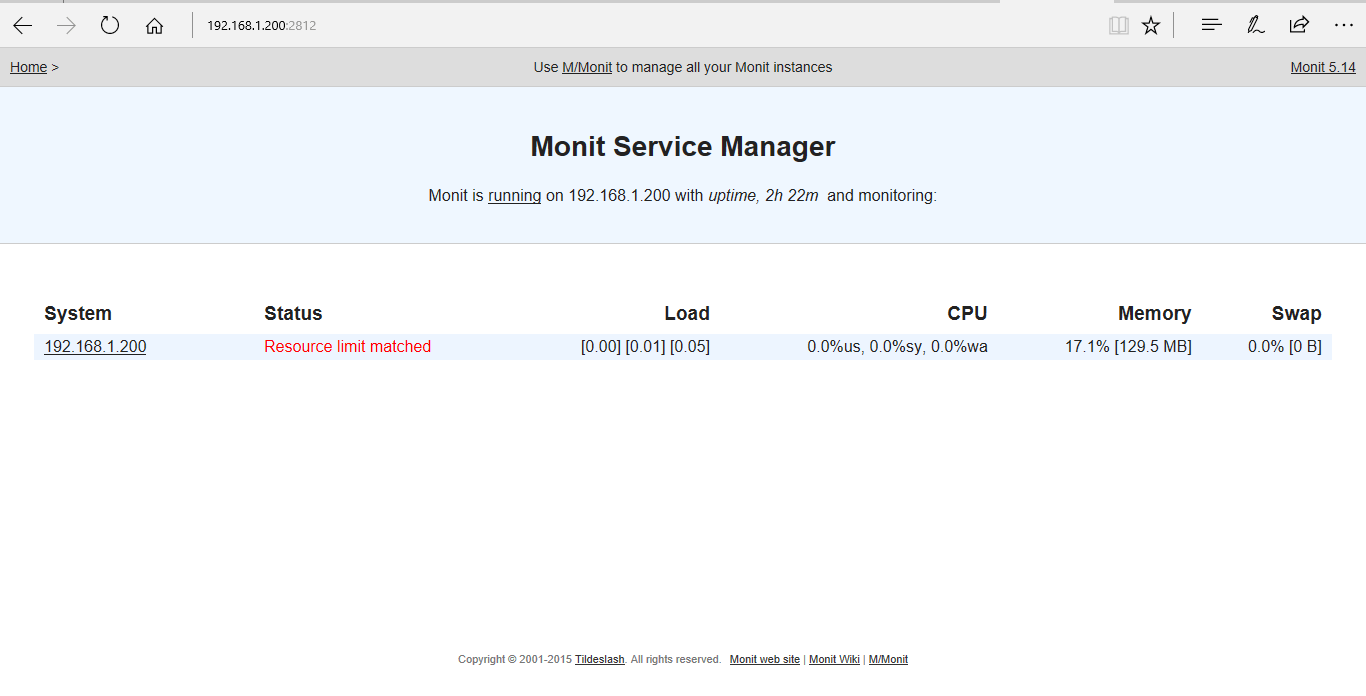
With this setup, I will only scrach the surface of what Monit can do for us.
#Monit config how to
In this tutorial, let me demonstrate how to set up Monit on a local server (as a backup monitor) to monitor common services. Even as a full-blown monitoring system, Monit is very useful and powerful for any Linux admin. I have been using Monit for several years on multiple hosts, and I am very pleased how reliable it has been. The combination of ease of setup, lightweight implementation and powerful features makes Monit an ideal candidate for a backup monitoring tool. Yet, Monit lends itself to full-blown monitoring, capable of process status monitoring, filesystem change monitoring, email notification, customizable actions for core services, and so on. Monit is extremely easy to install and reasonably lightweight (with only 500KB in size), and does not require any third-party programs, plugins or libraries. Monit is a cross-platform open-source tool for monitoring Unix/Linux systems (e.g., Linux, BSD, OSX, Solaris). In case a centralized monitor is down, you will still be able to maintain visibility on your core servers from their backup monitor. One way to add redundancy to your monitoring system is to install standalone monitoring software (as a fallback) at least on any critical/core servers on your network.



While centralized monitoring makes an admin's life easy when dealing with many hosts and devices, a dedicated monitoring box obviously becomes a single point of failure if the monitoring box goes down or becomes unreachable for whatever reason (e.g., bad hardware or network outage), you will lose visibility on your entire infrastructure. Many Linux admins rely on a centralized remote monitoring system (e.g., Nagios or Cacti) to check the health of their network infrastructure. How to set up server monitoring system with Monit


 0 kommentar(er)
0 kommentar(er)
